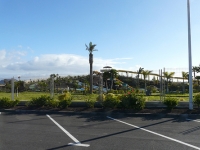
A perfect day out for the whole family, Baku contains a water park with gentle slides, animal features, and shallow pools for young children. The Parque Europa opens in the evening, offering a range of entertainment. Attractions like the Big Jacuzzi, the lazy river, and the wave pool will appeal to those who shy away from the more thrilling rides. As well as an infant play area, there is also a mini golf course if the family needs a break from the water for an hour or two as well as a food kiosk. On week days, between 9am and 2pm, there is a craft market set up in this area where visitors can browse for souvenirs from the Canary Islands and even the nearby shores of Africa. For simple fun in the sun, the Baku Water Park is a great attraction. Check out the website for details on the free bus to the park which services Castillo, Jandia, and Costa Calma on certain days.
Address : Corralejo
E-mail : [email protected]
Website : www.bakufuerteventura.com
Telephone : +34 928 867 227
Opening times : Open Monday, Tuesday, Friday, Saturday and Sunday from 17 May to 20 June and 20 September to 30 November from 10am to 5pm. Open Daily from 10am to 6pm from 21 June to 19 September.
Admission : €25 (adults), €19 (children and seniors). Concessions available; the price is reduced after 3pm.
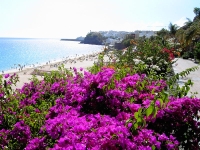
You won't need to go far on Fuerteventura to find a perfect beach, even if you are intent on seeking out solitude from holidaymakers. The best are found around Jandia on the southern tip of the island. Juan Gomez is one of these, with an enticing stretch of golden sand and reached by turning off the Morro Jable-Punta de Jandia Road. In the same section of the island is the pebbly black volcanic beach of La Pared, while right next door is the beach of Viejo Rey, a long stretch of golden sand flanked by dunes. Giniginamar is recommended for peace and quiet, surrounded by palm trees and other indigenous plants. If you're looking for a family-friendly beach, the southern Costa Calma is a great option because the conditions are ideal for safe swimming and the facilities are good. For remote beaches tourists can hire a 4x4 and explore the tracks leading to the sea on the west coast. Nudism is tolerated on all the island's beaches.
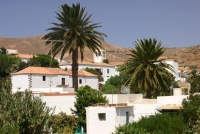
The old town of Betancuria was founded in 1405 and was the first capital of Fuerteventura. The town enjoys a fantastic location, offering attractive views of the hilly terrain and winding river below. In the town are several beautiful buildings and churches worth visiting, including the Church of Iglesia de Santa Maria de Betancuria and the convent of San Buenaventura. The Casa Museo Arquebiologico has some interesting artefacts including fertility idols and farming tools that reflect the earliest history of the island. The town was built primarily to defend against pirate attacks and in 1593 it was all but destroyed by pirates and then slowly rebuilt. There are various shops and stalls in Betancuria that sell some of the best handcrafts and local produce on Fuerteventura. One of the best places to get a feel for the folk culture and handicrafts of the region is the Centro Insular de Artesania, located next to the museum on the main road. The peaceful and sleepy old town seldom hosts tourists and accommodation is limited, but it makes for a very popular and worthwhile excursion, providing insight into the history and culture of the Canary Islands.
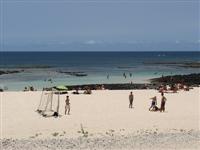
This rustic little village has plenty of charm and character for those looking for a quiet getaway and gorgeous beaches. El Cotillo has a rich history, and was previously a smuggler's harbour used by Fuerteventurans shipping goods off to Gran Canaria where the prices were better. The 18th century tower of Fortaleza del Tostón overlooks the town from the cliffs to the south of the harbour, while the Museum of Traditional Fishing is housed in the old lighthouse. The main attraction of a visit to El Cotillo is indisputably the coastline, which boasts spectacular beaches and lagoons, providing calm, sheltered swimming spots and long sandy stretches for walking and sunbathing. As there are rock pools and the water stays shallow for a few metres, the beaches are great for kids. Some nudity is common on the beaches, but there are so many secluded coves and so much space that it should be easy to find some privacy. It is also a good destination for surfers, with some decent waves and even a surf school. There are some pleasant bars and restaurants close to the shore, but no sun loungers or umbrellas to hire.
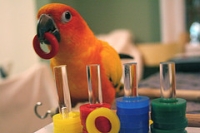
On the east coast of Fuerteventura, the little fishing village of La Lajita has been put on the tourist map because it offers one of the island's main attractions: the Oasis de Los Cammelos. Usually called the Fuerteventura Oasis Park, the zoo is home to more than 3,000 animals, including giraffes, camels, hippos, elephants, flamingos, lemurs, and more. The park is big and features nature trails winding around the enclosures. The only botanical garden in Fuerteventura, it showcases indigenous and tropical flora. There are parrot shows, birds of prey shows, sea lion shows, and reptile shows, as well as horse rides and camel safaris. The lemurs are a highlight and, for a little extra, visitors can stroll through their enclosure and interact with the friendly animals. It is possible to buy food to give the various animals at the entrance. There is a petting zoo and playground area designed for small children too. Visitors can relax under the palm trees at the zoo's bar or try out one of the restaurants. Every Sunday there is a fresh produce and craft market at the park.
Address : Ctra. General de Jardia s/n Lalita Pajara.
E-mail : [email protected]
Website : www.fuerteventuraoasispark.com/leng.html
Telephone : +34 902 400 434
Transport : Buses 1, 5 and 25 run from Tarajejo, and buses 1, 6 and 10 run from Corralejo.
Opening times : Open daily from 9am to 6pm.
Admission : €25 (adults); €12.50 (children aged 3 to 11). Some activities cost extra.
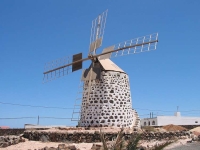
Historic buildings from between the 17th and mid-19th centuries remain in the village of La Oliva, which people can still visit. The Governor's townhouse (Casa de los Coroneles) has been restored and is open to the public, boasting some intricate woodwork. Also in the centre of the village is the pretty church of Parroquiade Nuestra Seiiora de Candelaria, with a square bell tower and finely carved wooden door. The interior of the church features a painting of the Last Judgement, a Baroque altar painting by Juan de Miranda, and some wonderful trompe l'oeil work. The village also has an art centre exhibiting the work of Canarian artists (Centro de Arte Canario Casa Mane). The somewhat desolate and barren natural landscape of the interior gives way dramatically to the bright turquoise water of the sea, and the beaches around La Oliva are very pretty. The water tends to be calm, making it a good swimming destination. Many tourists find it worth their while to spend some time in La Oliva and a number of fun outdoor activities are available, including sailing and mountain biking jaunts, and excursions into the Parque Natural de Corralejo.
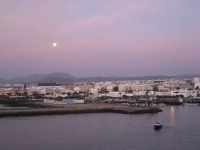
Only recently capitalising on the tourist trade, the streets in charming Puerto del Rosario have been resurfaced and the harbour promenade rebuilt. The main street provides some good souvenir shops and the old harbour area features some attractive examples of Canarian architecture. The home of exiled poet Miguel de Unamuno, which has been turned into a museum, is situated in the harbour area. There are two beaches in Puerto del Rosario: Playa Blancal, to the south, has Blue Flag status and is home to some surf schools, but the currents can get dangerously strong; and Playa Chica, right in town, is a small but popular beach with good facilities. A great excursion from the town is a trip inland to Tefia, where the Ecomuseo La Alcogida can be found: an open-air 'village' made of restored, abandoned buildings, which give visitors an idea of the hard life the locals used to live, scraping out an existence from the land. Some traditionally clad artisans work in the village, making handicrafts.

Travel Guide powered by Word Travels, copyright © 2023 Globe Media Ltd. By its very nature information in this travel guide is subject to change at short notice and travellers are urged to verify information on which they're relying with the relevant authorities. Neither Globe Media Ltd nor Travel Vogue can accept any responsibility for any loss or inconvenience to any person as a result of information contained above.